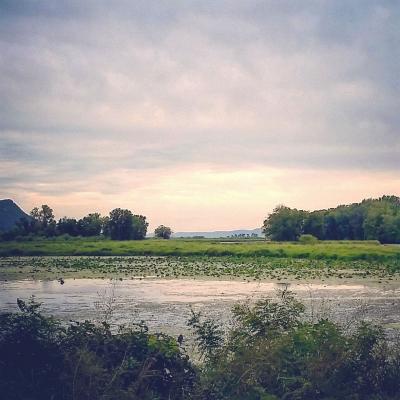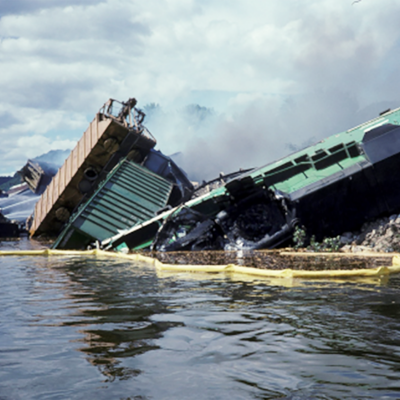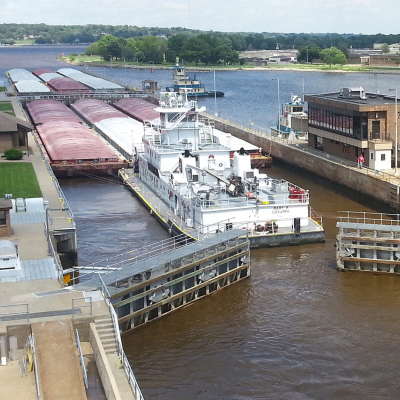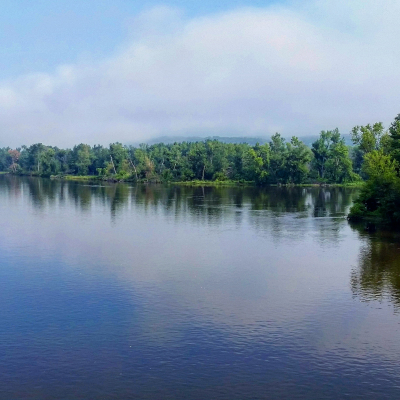UMRBA's Interstate Water Quality Monitoring Strategy facilitates coordinated and comprehensive water quality monitoring for the Upper Mississippi River. Probabilistic and fixed site sampling are designed to support the states' ability to determine whether Clean Water Act goals are being met related to four major designated uses (aquatic life, drinking water, fish consumption, recreation). The strategy involves chemical, physical, and biological parameters in the main channel and side channels. While the tools are not yet developed to assess off-channel areas, UMRBA intends to develop that capability in the future. It will allow the states to more effectively identify problem areas, target management actions, and measure progress in protecting water quality.
The states are committed to integrating and utilizing existing program data and information to the greatest extent possible and anticipate working closely with other programs in data sharing. Several federal, state, and regional programs conduct significant water quality monitoring. Those efforts are designed to meet their own objectives, none of which are capable of supporting the states' Clean Water Act (CWA) purposes and that cover the river’s full spatial extent.
Pilots Testing Feasibility and Effectiveness
The monitoring strategy was first piloted on Reaches 0-3 in 2016, extending from the Twin Cities in Minnesota to La Crosse, Wisconsin. The Reaches 0-3 pilot involved Minnesota and Wisconsin, and concluded that a shared, assessment incorporating biology and water chemistry is achievable. Participating agencies ultimately recommended that the strategy be implemented throughout the UMR and some modifications to improve its effectiveness and feasibility, and to maintain and build capacity to support coordinated interstate monitoring.
A second pilot is underway in Reaches 8-9, extending from the Iowa River confluence to L&D 22. The Reaches 8-9 pilot involves Illinois, Iowa, and Missouri and incorporated many of the insights gained from the Reaches 0-3 pilot. Stay tuned for results and findings.
After the conclusion of the Reaches 8-9 pilot, UMRBA will consider how the interstate WQ monitoring strategy can be implemented and scaled up to the entire UMR and whether there is a dedicated and consistent funding source.
Clean Water Act Authorities for Interstate Waters
Interstate waters pose a particular challenge for USEPA and the states. This is inherent in a system that is designed to establish a national framework, while providing the states with the flexibility to implement that framework in a manner that meets their individual needs and circumstances. Water, of course, does not recognize political boundaries. The decisions of one state may have implications for another. Different approaches among states on shared waterbodies can give rise to public concern and confusion.
The Clean Water Act (CWA) includes provisions for interstate consultation and coordination regarding specific actions in several instances. Moreover, Section 103 of the CWA offers the following general guidance, directing USEPA to encourage cooperative activities by the state for the prevention, reduction, and elimination of pollution, encourage the enactment of improved and, so far as practicable, uniform state laws relating to the prevention, reduction, and elimination of pollution; and encourage compacts between states for the prevention and control of pollution.
Historical Documents
Midwest Biodiversity Institute's UMR CWA Monitoring Strategy Options and Considerations
UMRBA Comparison of States' CWA Monitoring, Assessment, and Impairment Decisions
UMRBA 2009 Biological Indicators Workshop




